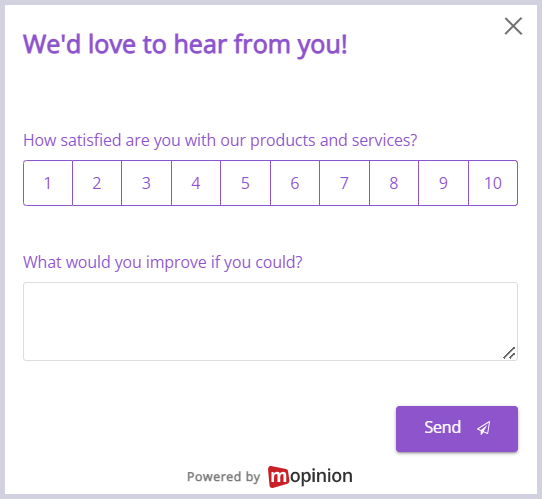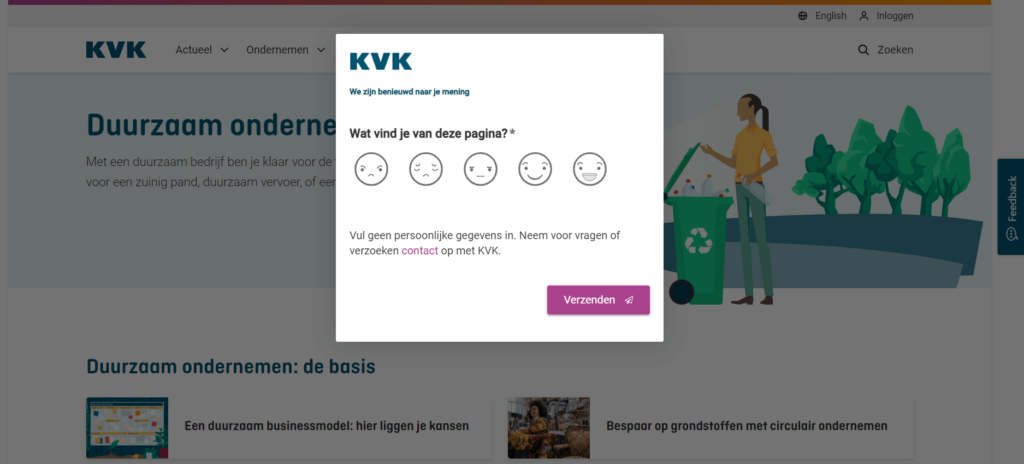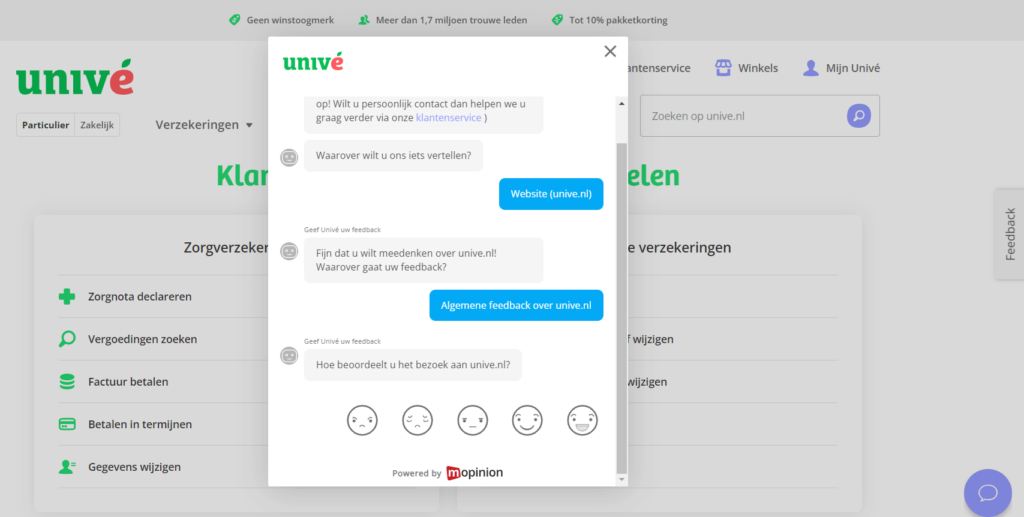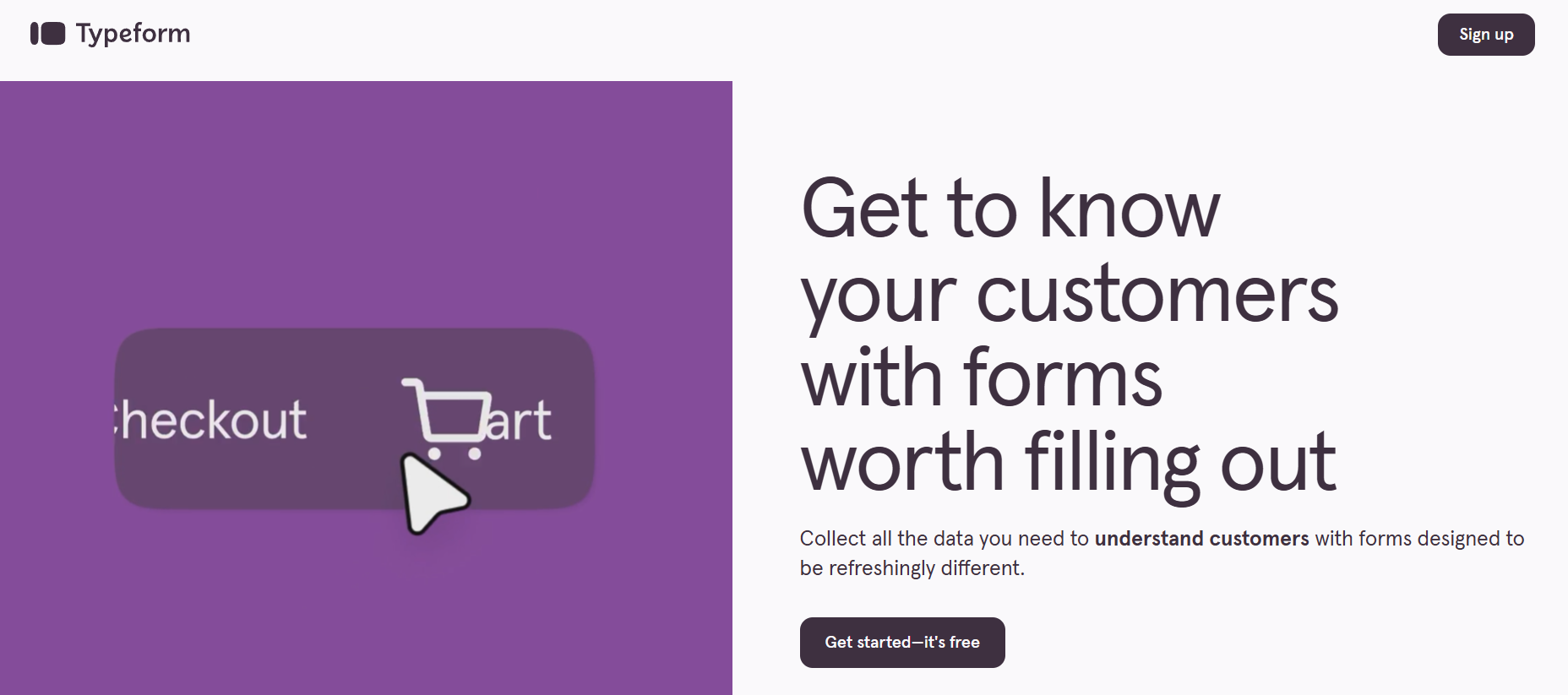From fostering repeat business and generating positive word-of-mouth referrals to bolstering a company’s reputation in an increasingly competitive market, customer satisfaction (CSAT) is the driving force that propels businesses towards sustained growth and prosperity. After all, when customers feel genuinely satisfied, not only does this signal a job well done, but it also translates into a host of tangible benefits like repeat business and great word-of-mouth referrals. But you probably already know that… However, what you might not already know is how powerful customer satisfaction surveys can be, which questions to ask in a CSAT survey, what it takes to create an effective survey and which online survey software is best for your business.
In this article, we will dive into the following:
- What is a customer satisfaction survey?
- The benefits of using customer satisfaction surveys
- How to measure customer satisfaction
- Customer satisfaction survey questions
- Customer satisfaction survey examples from real brands
- Best practices for customer satisfaction surveys
- The best customer satisfaction survey software
What is a customer satisfaction survey?
A customer satisfaction survey, also known as a CSAT survey, is a widely popular type of online survey that measures customer loyalty with your brand. By asking your customers to provide a CSAT score on your website, mobile app or within email campaigns, your organisation can better assess satisfaction levels with your products, services and online experiences. In that sense, it’s also quite versatile in that you can use it to measure satisfaction across different aspects of your business.

The benefits of using customer satisfaction surveys
Customer satisfaction surveys offer up a number of benefits to the organisations that deploy them.
Firstly, CSAT surveys serve as a direct conduit for gathering feedback straight from the source – the customer. Customer feedback surveys enable your business to tailor products, services and the online experience to the expectations of the customer, as well as pinpoint areas of improvement. Moreover, surveys – in general – foster a sense of engagement which gives your customers the feeling that their opinions are valued by your organisation. The result? Increased customer loyalty. Additionally, the CSAT data that is collected via a customer satisfaction survey can easily be analysed to identify trends, which helps organisations make smart, data-driven decisions.
All together, these benefits empower your organisation to adapt and deliver on customer expectations, which drives success in the long term.
How do I measure customer satisfaction?
CSAT surveys typically ask customers ‘How satisfied are you with our [products, services or experience]’. That being said, measuring the scores can be done in a variety of different ways. There are a number of different scales you can use in your CSAT surveys to measure customer satisfaction, including Likert Scales, Stars and Smileys.
And of course, there are various moments across the online customer journey, whereby it is effective to pulse your customers. For example, many organisations gauge CSAT right after an interaction has taken place, such as a purchase. This enables the customer to provide their feedback while the experience is still fresh in their mind. Additionally, CSAT surveys can also be deployed following an interaction with the organisation such as customer support or at regular intervals depending on the customer’s usage and/or visit frequency. The latter is ideal for monitoring their satisfaction over time with different demographics.
Customer satisfaction survey questions
When gauging customer satisfaction, there are lots of different survey questions you can incorporate into your research. While most customer feedback surveys of this nature start off with a question that asks for a rating, it can be useful to work with follow-up questions as well. In this way, you will be able to monitor trends using the main CSAT score and discover why the score is rising or falling, enabling you to take action accordingly.
For this post, we’ve broken down our example survey questions into two categories: satisfaction with the online experience and satisfaction with a product and/or service.

Goal: Satisfaction with the online experience
- How satisfied are you with our website / mobile app?
- How would you rate your overall experience with [insert brand]?
- Rate your satisfaction with the [insert categories, i.e. purchasing experience, product information, etc]
- Rate your experience on our mobile app.
- Rate your experience on our website.
- Rate your purchasing experience.

Goal: Product & service satisfaction
- How satisfied are you with our products and services?
- What would you improve if you could?
- Does our product help you achieve your goals?
- How often do you use our product / service?
- Which product features are most valuable to you?
- Which product feature do you use most frequently?
Note: It’s useful to use open-ended questions as a follow-up so that customers can explain why they provided a specific CSAT rating.
Need some more guidance for building your CSAT survey?
Check out this post for a more extensive list of survey questions as well as tips on which survey formats to use depending on your goals.
Customer satisfaction survey examples from real brands
So what do these surveys look like in practice? Here are a few great examples of CSAT-loving organisations that are doing it right (and using Mopinion!).
Calvin Klein
Calvin Klein has a great customer satisfaction survey live on their website.
What’s so great about this survey, you ask? Not only does it start off with the CSAT score, but it stems into a few additional questions about the experience, giving the organisation better insight into A.) the customer’s goal and B.) which category their feedback falls under. The latter is great for sorting and acting quickly on this feedback on a departmental level.

Learn more about how Calvin Klein collects online feedback with Mopinion.
KvK (Dutch Chamber of Commerce)
The Dutch Chamber of Commerce also leverages CSAT surveys on its website. In this case, the survey is short and to the point, which, as we mentioned before, is great for your survey response rate. After submitting a score, the survey provides the viewer with the opportunity to explain their score with an open comments section.

Univé
Univé is a Dutch insurance provider that uses CSAT surveys in a conversational feedback format. Conversational feedback – a unique feature offered within the Mopinion software – gives a chat-like feel to the feedback process. In this case, Univé gathers data on customer satisfaction in a fun and interactive way.

Best practices when using customer satisfaction surveys
In addition to using well-formulated questions in your customer feedback surveys, it’s also important to know when and where to deploy your CSAT surveys.
Do:
- Start with your CSAT metric. Your goal is to obtain insights into the level of customer satisfaction, so make this the focal point of your survey by asking this first.
- Give the opportunity to provide open comments. In addition to the hard numbers, you’re also going to need qualitative data that helps you understand your scores. Give your customers the opportunity to provide an explanation of their response.
- Gather CSAT feedback while the experience is still fresh. Don’t wait too long to gather CSAT data. It’s advisable to gather this feedback right after an interaction, such as a purchase.
Don’t:
- Create survey fatigue. Your customers are busy enough as it is. So it’s important that your CSAT surveys are short and concise. Surveys with a max of 3-5 questions are also more likely to keep your survey response rates up.
- Ask double-ended questions. Focus on your goal of understanding your customers’ satisfaction level, rather than surveying them on multiple facets of your website or app.
- Use complex language. CSAT surveys should be clear and easy to understand for the customer. Using company jargon or complex terminology could put off your customers and result in lower response rates.
Customer satisfaction survey software
That being said, designing an effective customer satisfaction survey requires having the right survey software in place. And thankfully, there are a number of software solutions available that enable a smooth and seamless survey creation and deployment process.
Mopinion
Mopinion is the #1 feedback software for websites, apps and email. It not only offers solutions for creating customer feedback surveys, such as CSAT, but also provides its users with in-depth analysis opportunities. With real-time data visualisation in customisable dashboards and charts, users are able to quickly and efficiently digest large amounts of (CSAT) feedback data on all their digital channels, including website, mobile apps and email. The solution also offers a number of ready-to-use survey templates for gathering CSAT (among other scores).
Standout features:
- Easy-to-use interface
- AI-generated feedback summaries
- Build customisable forms with drag-and-drop functionality
- Conversational, chat-like feedback customer feedback surveys
- Visual Feedback
- More complex surveys that include question routing
- In-depth analysis, including text analytics, sentiment analysis, smart labelling, etc.
- Advanced data visualisation with in-chart filtering and customisable dashboards
- Seamless data exploration
- Integrates seamlessly with applications such as Slack, Google Analytics, Jira, HubSpot, Salesforce, etc.
- Advanced action management
Interested? Start your free trial today or request a demo.
Qualtrics

Qualtrics is an experience management software with solutions available for customer experience and employee experience.With this solution, users can create and customise their own CSAT surveys or choose from a library of 100+ question types.
Standout features:
- Text and sentiment analytics
- AI-fueled insights
- Linguistic categorisation
- Emotion and intent detection
- Summarises data from all digital platforms
Website: www.qualtrics.com
Wootric

Wootric (an InMoment company) is a customer experience management software that focuses mainly on the use of single-question microsurveys, including CSAT. The tool is easy to install, which makes getting started really simple. Wootric also offers an analytics platform which is uniquely available to users but also a standalone product.
Standout features:
- Customisable questions
- Negative feedback management
- Pulse surveys
Website: www.wootric.com
HubSpot Customer Feedback

HubSpot is a customer platform that caters to Marketing, Sales, Operations, Customer Service and more. Within their platform, they also offer a customer feedback solution. Using this solution, users can create and deliver CSAT (as well as NPS and CES) surveys via email and on website.
Standout features:
- Tailored surveys thanks to a wide range of question types and templates
- Send your surveys via web link or email
- Built-in feedback dashboards
Website: www.hubspot.com
SurveyMonkey

SurveyMonkey is a well-known survey tool that offers 15 different types of survey questions (including multiple choice, Likert and open comments). It’s a solution that is especially suited for longer, tranditonal surveys or one-off surveys.
Standout features:
- “Freemium” version, but more advanced tools are paid
- Templates that let you build surveys quickly
Website: www.surveymonkey.com
Survicate

Survicate is another survey tool that is great for gathering CSAT scores. With this solution, users can trigger targeted surveys at different locations across the website, as well as send out surveys by email. Survicate offers a pretty substantial library of predefined surveys that users can choose from so that they can quickly and easily send out CSAT surveys, but also NPS and CES. In terms of analysis, this survey software has dashboarding capabilities, CSV and XLS exporting options and NPS analysis.
Standout features:
- Drag-and-drop to create surveys
- Chat survey feature
- Options for automated feedback collection
- Allows you to capture insights from even partially completed surveys
Website: www.survicate.com
Typeform

Typeform is an online survey software which enables users to put together their own surveys quickly and easily. A unique feature of this software is that there is also a free version which includes free features including unlimited questions, data export, custom-designed themes and readily made templates. It also has a nice, but basic reporting section.
Standout features:
- AI-powered forms and features
- Option for video interaction within the forms
- Offers a free version
Website: www.typeform.com
Measure CSAT across all your digital channels
The fact remains, no matter which software you choose, CSAT surveys are an important tool for measuring and monitoring customer satisfaction levels on your digital channels. By actively measuring and prioritising customer satisfaction, your organisation can garner invaluable insights into your strengths, weaknesses, and areas for improvement.
Ready to give your CSAT a boost? With Mopinion you can get your customer satisfaction surveys up and running in no-time. Our user-friendly software guides you through the process of designing custom surveys that are sure to reel in the insights you need for an improved experience. Once that data is collected, you and your team can easily monitor the results in detail in our built-in dashboard and reporting solutions. Everything you need all in one place!
Ready to see Mopinion in action?
Want to learn more about Mopinion’s all-in-1 user feedback platform? Don’t be shy and take our software for a spin! Do you prefer it a bit more personal? Just book a demo. One of our feedback pro’s will guide you through the software and answer any questions you may have.






